Volume 9-14 (2020-26)
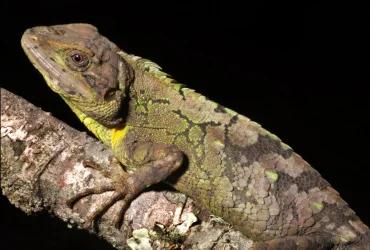 v13i1.317
v13i1.317ISSN: 1800-427X (printed)
eISSN: 1800-427X (online)
DOI:10.47605/tapro.v13i1.317
Submitted date: 10 January 2024
Accepted date: 21 May 2024
Published date: 30 May 2024
Pp. 1–8, pls. 1–5.
A NEW MONTANE-DWELLING SPECIES OF Japalura GRAY, 1853 (SQUAMATA: AGAMIDAE) FROM ARUNACHAL PRADESH, INDIA
Zeeshan A. Mirza*, Gaurang Gowande, Tejas Thackeray, Harshal Bhosale, Mandar Sawant, Pushkar Phansalkar & Harshil Patel
*Corresponding author. E-mail: snakeszeeshan@gmail.com
Abstract
The montane agamid lizard Japalura austeniana (Annandale, 1908), is rare and is distributed across parts of the eastern Himalayas of India and China. Support from molecular and morphological data provide evidence for the existence of a species complex in the populations referred to as that binomen, and we here describe a morphologically cryptic allied new species. Evidence from molecular data suggests the presence of additional undescribed species across the distribution of that species complex. Elevation might be the restricting factor for gene flow explaining most of the diversification of that montane species complex across the Himalayas.
Key words : Agamidae, biodiversity hotspot, biogeography, conservation, Himalayas, systematics
Section Editor: Ivan Ineich
LSID:urn:lsid:zoobank.org
eISSN: 1800-427X (online)
DOI:10.47605/tapro.v13i1.317
Submitted date: 10 January 2024
Accepted date: 21 May 2024
Published date: 30 May 2024
Pp. 1–8, pls. 1–5.
A NEW MONTANE-DWELLING SPECIES OF Japalura GRAY, 1853 (SQUAMATA: AGAMIDAE) FROM ARUNACHAL PRADESH, INDIA
Zeeshan A. Mirza*, Gaurang Gowande, Tejas Thackeray, Harshal Bhosale, Mandar Sawant, Pushkar Phansalkar & Harshil Patel
*Corresponding author. E-mail: snakeszeeshan@gmail.com
Abstract
The montane agamid lizard Japalura austeniana (Annandale, 1908), is rare and is distributed across parts of the eastern Himalayas of India and China. Support from molecular and morphological data provide evidence for the existence of a species complex in the populations referred to as that binomen, and we here describe a morphologically cryptic allied new species. Evidence from molecular data suggests the presence of additional undescribed species across the distribution of that species complex. Elevation might be the restricting factor for gene flow explaining most of the diversification of that montane species complex across the Himalayas.
Key words : Agamidae, biodiversity hotspot, biogeography, conservation, Himalayas, systematics
Section Editor: Ivan Ineich
LSID:urn:lsid:zoobank.org
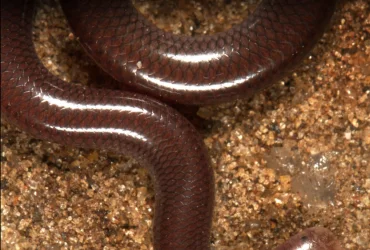 v12i2.316
v12i2.316eISSN: 1800-427X (online)
DOI:10.47605/tapro.v12i2.316
Submitted date: 5 December 2022
Accepted date: 10 November 2023
Published date: 18 November 2023
Pp. 111–114.
An account of family Orchidaceae in a part of Northern Western Ghats India
M.M. Bhagwat, D.M. Mahajan* & M. Kulkarni
*Corresponding author. E-mail: mahajandm@gmail.com
The Western Ghats of India is known across the world as a biodiversity hotspot due to its rich plant and animal diversity. Orchids are most abundant in this humid tropical and subtropical region. India has 1331 orchid species distributed over 186 genera, of which 400 are endemic. Many orchid species have been reported from Mulshi (alt. 600–1,131 m a.s.l.) which falls in the Northern Western Ghats of Maharashtra. Recently, Jalal & Jayanthi (2018, 2019) recorded 32 genera and 107 species of orchids from the northern Western Ghats. The vegetation is diverse from moist to dry deciduous forests with some semi evergreen elements and open grasslands.
Section Editor: Pankaj Kumar
DOI:10.47605/tapro.v12i2.316
Submitted date: 5 December 2022
Accepted date: 10 November 2023
Published date: 18 November 2023
Pp. 111–114.
An account of family Orchidaceae in a part of Northern Western Ghats India
M.M. Bhagwat, D.M. Mahajan* & M. Kulkarni
*Corresponding author. E-mail: mahajandm@gmail.com
The Western Ghats of India is known across the world as a biodiversity hotspot due to its rich plant and animal diversity. Orchids are most abundant in this humid tropical and subtropical region. India has 1331 orchid species distributed over 186 genera, of which 400 are endemic. Many orchid species have been reported from Mulshi (alt. 600–1,131 m a.s.l.) which falls in the Northern Western Ghats of Maharashtra. Recently, Jalal & Jayanthi (2018, 2019) recorded 32 genera and 107 species of orchids from the northern Western Ghats. The vegetation is diverse from moist to dry deciduous forests with some semi evergreen elements and open grasslands.
Section Editor: Pankaj Kumar
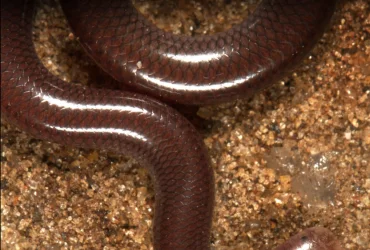 v12i2.315
v12i2.315eISSN: 1800-427X (online)
DOI:10.47605/tapro.v12i2.315
Submitted date: 7 July 2022
Accepted date: 31 October 2023
Published date: 18 November 2023
Pp. 106–110, Pls. 31–32.
Rediscovery and amended description of Strobilanthes humilis (Acanthaceae)
S. Thomas, P.A. Krishnapillai, S.J. Britto & Bince Mani*
*Corresponding author. E-mail: binsnm@gmail.com
Strobilanthes Blume consists of approximately 350 species, chiefly distributed in the tropical and sub-tropical parts of Asia but extending to the Pacific islands. Approximately 150 species of Strobilanthes are reported from India and, among them, around 70 species are restricted to South India. In the course of a floristic survey in the Megamalai Hills of Tamilnadu in 2016–2017, we collected a remarkable specimen of Strobilanthes, which was characterized by having viscous uninterrupted spikes with a subventricose corolla. Since it has spicate inflorescences, 5-partite calyces, two fertile stamens, and densely hygroscopic-pubescent seeds, the material belongs to the S. kunthiana group. After a critical examination of relevant literature and herbarium materials it was found that the specimen matches the type of S. humilis, hence our collections are the first verified collection after its type collections in 1836.
Section Editor: Wendy A. Mustaqim
DOI:10.47605/tapro.v12i2.315
Submitted date: 7 July 2022
Accepted date: 31 October 2023
Published date: 18 November 2023
Pp. 106–110, Pls. 31–32.
Rediscovery and amended description of Strobilanthes humilis (Acanthaceae)
S. Thomas, P.A. Krishnapillai, S.J. Britto & Bince Mani*
*Corresponding author. E-mail: binsnm@gmail.com
Strobilanthes Blume consists of approximately 350 species, chiefly distributed in the tropical and sub-tropical parts of Asia but extending to the Pacific islands. Approximately 150 species of Strobilanthes are reported from India and, among them, around 70 species are restricted to South India. In the course of a floristic survey in the Megamalai Hills of Tamilnadu in 2016–2017, we collected a remarkable specimen of Strobilanthes, which was characterized by having viscous uninterrupted spikes with a subventricose corolla. Since it has spicate inflorescences, 5-partite calyces, two fertile stamens, and densely hygroscopic-pubescent seeds, the material belongs to the S. kunthiana group. After a critical examination of relevant literature and herbarium materials it was found that the specimen matches the type of S. humilis, hence our collections are the first verified collection after its type collections in 1836.
Section Editor: Wendy A. Mustaqim
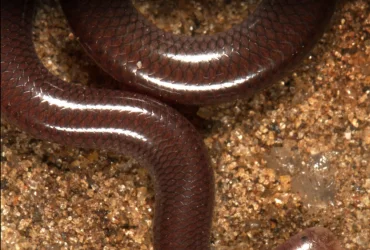 v12i2.314
v12i2.314eISSN: 1800-427X (online)
DOI:10.47605/tapro.v12i2.314
Submitted date: 7 July 2022
Accepted date: 31 October 2023
Published date: 18 November 2023
Pp. 104–105, Pls. 29–30.
A new Ascomycetes fungus (Meliolaceae: Prataprajella) from Kerala, India
L.K. Mathew*
*Corresponding author. E-mail: linikmathew1985@gmail.com
Meliolaceae fungul species are biotrophic on the leaves and stems of plants and most species do not cause severe damage to the host plant. The genus Prataprajella Hosag. currently contains three species: P. turpiniicola (Hosag.) Hosag. 1992; P. subacuminata (W. Yamam.) B. Song & Y.X. Hu 1999; and P. rubi Hosag., C.K. Biju & T.K. Abraham 2005. I found an unknown fungal species infecting the leaves of Memecylon edule (Melastomataceae). Microscopic examination of the black mildew on the leaves revealed that it is a hitherto undescribed species. Hence, based on the host specificity and other morphological features, here I describe and illustrate a fourth species collected from Malabar Wildlife Sanctuary of Kozhikode District, Kerala, India.
[MycoBank#850802]
Section Editor: Samantha C. Karunarathna
DOI:10.47605/tapro.v12i2.314
Submitted date: 7 July 2022
Accepted date: 31 October 2023
Published date: 18 November 2023
Pp. 104–105, Pls. 29–30.
A new Ascomycetes fungus (Meliolaceae: Prataprajella) from Kerala, India
L.K. Mathew*
*Corresponding author. E-mail: linikmathew1985@gmail.com
Meliolaceae fungul species are biotrophic on the leaves and stems of plants and most species do not cause severe damage to the host plant. The genus Prataprajella Hosag. currently contains three species: P. turpiniicola (Hosag.) Hosag. 1992; P. subacuminata (W. Yamam.) B. Song & Y.X. Hu 1999; and P. rubi Hosag., C.K. Biju & T.K. Abraham 2005. I found an unknown fungal species infecting the leaves of Memecylon edule (Melastomataceae). Microscopic examination of the black mildew on the leaves revealed that it is a hitherto undescribed species. Hence, based on the host specificity and other morphological features, here I describe and illustrate a fourth species collected from Malabar Wildlife Sanctuary of Kozhikode District, Kerala, India.
[MycoBank#850802]
Section Editor: Samantha C. Karunarathna
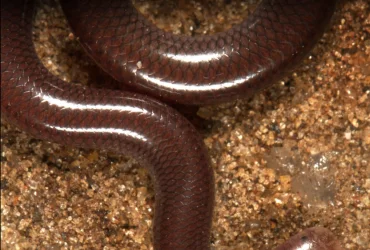 v12i2.313
v12i2.313eISSN: 1800-427X (online)
DOI:10.47605/tapro.v12i2.313
Submitted date: 9 January 2023
Accepted date: 7 November 2023
Published date: 18 November 2023
Pp. 101–103.
Are Indian foxes vulnerable in degraded habitat in North Gujarat?
P. Desai, V. Rabari* & N. Dharaiya
*Corresponding author. E-mail: rabarivasant016@gmail.com
The Indian fox, Vulpes bengalensis (Shaw, 1800), one of the smallest canids, is restricted to the Indian subcontinent except the Western Ghats. They prefer dry vegetation cover including scrub, grassland and agricultural habitat where they can easily feed on rodents, crabs and insects. The Indian fox is listed in Schedule I under the Wildlife Amendment Act 2022 and classified as a Least Concern (LC) species by IUCN, which affords it less attention and a lower degree of protection compared to threatened species.
Section Editor: Lee Harding
DOI:10.47605/tapro.v12i2.313
Submitted date: 9 January 2023
Accepted date: 7 November 2023
Published date: 18 November 2023
Pp. 101–103.
Are Indian foxes vulnerable in degraded habitat in North Gujarat?
P. Desai, V. Rabari* & N. Dharaiya
*Corresponding author. E-mail: rabarivasant016@gmail.com
The Indian fox, Vulpes bengalensis (Shaw, 1800), one of the smallest canids, is restricted to the Indian subcontinent except the Western Ghats. They prefer dry vegetation cover including scrub, grassland and agricultural habitat where they can easily feed on rodents, crabs and insects. The Indian fox is listed in Schedule I under the Wildlife Amendment Act 2022 and classified as a Least Concern (LC) species by IUCN, which affords it less attention and a lower degree of protection compared to threatened species.
Section Editor: Lee Harding
Hubungi Kami
The ultimate aim of the journal is to provide an effective medium for communication of the latest and best scientific information.
Copyright © 2020 Taprobanica. All Rights Reserved
Jasa Pembuatan Website by IKT




